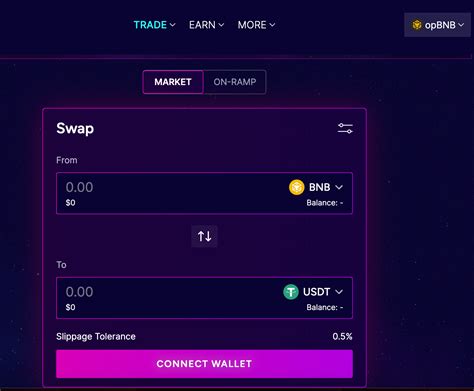Demystifying Bitcoin Mining: A Comprehensive Guide

`markdown
Preview: Ever wondered how new bitcoins are created and transactions are verified? This article dives deep into the world of Bitcoin mining, explaining its processes, importance, and the technology that powers it. We'll explore everything from its basic definition to its environmental impact.
What is Bitcoin Mining? A Deep Dive
What is Bitcoin mining? Simply put, it's the process of verifying and adding new transaction records to the Bitcoin blockchain. Miners use powerful computers to solve complex cryptographic puzzles. The first miner to solve the puzzle gets to add the next block of transactions to the blockchain and is rewarded with newly created bitcoins. Think of it as a digital race where participants compete to validate transactions and earn rewards. The process secures the Bitcoin network and prevents double-spending.
The Mechanics of Bitcoin Mining
Understanding the technical aspects is crucial. Bitcoin mining relies on the Proof-of-Work (PoW) consensus mechanism. This mechanism requires miners to expend significant computational effort to solve a cryptographic puzzle. Let's break down the key components:
- Hashing: Miners use hash functions to convert transaction data into a fixed-size string of characters.
- Block Header: This contains information about the previous block, a timestamp, and a "nonce" (a random number).
- Difficulty Adjustment: The Bitcoin network adjusts the difficulty of the puzzles roughly every two weeks to maintain a consistent block creation rate.
- Mining Pools: Miners often join pools to combine their computational power and increase their chances of winning block rewards.
- GPUs (Graphics Processing Units): Offered a significant performance boost over CPUs.
- FPGAs (Field-Programmable Gate Arrays): More efficient than GPUs but required more technical expertise.
- ASICs (Application-Specific Integrated Circuits): The most powerful and energy-efficient hardware specifically designed for Bitcoin mining. ASICs dominate the current mining landscape.
- Transaction Verification: Miners verify that transactions are valid and that the sender has sufficient funds.
- Double-Spending Prevention: By adding transactions to the blockchain, miners prevent the same bitcoins from being spent twice.
- Network Security: The decentralized nature of Bitcoin mining makes it resistant to censorship and single points of failure.
- Electricity Costs: Mining requires vast amounts of electricity to power the hardware.
- Hardware Costs: ASIC miners are expensive and require regular upgrades to remain competitive.
- Mining Difficulty: As more miners join the network, the difficulty of finding new blocks increases, reducing individual rewards.
- Bitcoin Price Volatility: The value of Bitcoin can fluctuate significantly, impacting the profitability of mining.
- Renewable Energy: Some miners are using renewable energy sources like solar, wind, and hydro power.
- Energy Efficiency: Newer ASIC miners are more energy-efficient than older models.
- Carbon Offsets: Some miners are purchasing carbon offsets to mitigate their environmental impact.
- Bitcoin Halving
- Proof-of-Work vs. Proof-of-Stake
- The History of Bitcoin
The Hardware: From CPUs to ASICs
Early Bitcoin mining could be done using a standard computer's CPU. However, as the network grew and the difficulty increased, miners transitioned to more specialized hardware:
The Role of Miners in the Bitcoin Network
Bitcoin mining isn't just about creating new coins. Miners play a vital role in maintaining the security and integrity of the Bitcoin network:
The Economics of Bitcoin Mining
Mining can be a profitable venture, but it also comes with significant costs:
The block reward, currently 6.25 BTC per block (as of this writing, and subject to Bitcoin's halving schedule), is the primary incentive for miners. Transaction fees also contribute to miners' earnings.
The Environmental Impact of Bitcoin Mining
Bitcoin mining's energy consumption has raised concerns about its environmental impact. The use of fossil fuels to power mining operations contributes to greenhouse gas emissions and climate change.
However, there are also efforts to make mining more sustainable:
The Future of Bitcoin Mining
The future of Bitcoin mining is likely to involve increased energy efficiency, greater reliance on renewable energy, and further decentralization. As the Bitcoin network continues to evolve, mining will undoubtedly adapt to meet the challenges and opportunities ahead.
Internal Links
For further reading, consider exploring our articles on:
Frequently Asked Questions (FAQ)
Q: What exactly is Bitcoin mining?
A: Bitcoin mining is the process where miners use powerful computers to solve complex cryptographic puzzles, validating transactions and adding new blocks to the blockchain. This secures the network and creates new bitcoins.
Q: Is Bitcoin mining profitable?
A: Profitability depends on factors like electricity costs, hardware costs, mining difficulty, and the price of Bitcoin.
Q: What hardware is needed for Bitcoin mining?
A: Modern Bitcoin mining primarily uses ASICs (Application-Specific Integrated Circuits) designed specifically for this purpose.
Q: How does Bitcoin mining secure the network?
A: By requiring significant computational power to solve the cryptographic puzzles, Bitcoin mining makes it extremely difficult for malicious actors to tamper with the blockchain.
Q: What is the environmental impact of Bitcoin mining?
A: It consumes a large amount of energy, and if powered by fossil fuels, can contribute to greenhouse gas emissions. However, increasing adoption of renewable energy sources aims to mitigate this impact.
`





